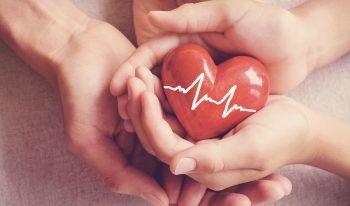For many patients and family members, philanthropy is a powerful means to completing their journey in healing. Even though this treatment is not medical in nature, clinicians can play a critical role in the healing that philanthropy provides. We recently had the opportunity to interview a patient turned philanthropist whose arc of emotional treatment—with the help of his physician—took him from hopelessness to joy.
“It was a devastating day,” the patient recalls upon receiving a diagnosis of leukemia. “When you think ‘leukemia,’ you automatically think the worst. To go home and tell your family is heart-wrenching. It was just a very dark time.”
Fortunately for this gentleman, a newly developed drug—one that his physician had researched—saved his life.
Once his health turned the corner, the patient was ready to begin the next stage in his treatment: healing emotionally through philanthropy. He began to think about what he could do—even in a small way—to give back by helping to support the research that saved his life. “I wanted to carry it forward to the next dad,” he says, “So he doesn’t have to go home and tell his family. It’s such a devastating thing.”
As with many medical philanthropists, this patient’s first point of contact was with his physician. He recalls telling his physician, “I can’t possibly give you back what you’ve handed me—which are the keys to my life—but in some small way, I want to get involved.” The physician referred the gentleman to the development staff. Together they decided that since he was “a living, breathing example of this amazing research,” he would share his experience at a luncheon that was being held to raise funds for a research laboratory that would support the physician’s work.
Even though he claims he stammered through his first few speeches, he was hooked. “I became more involved with every meeting and every public appearance and speaking engagement. I think my passion came through and my personal experience started to really shine through.”
A turning point in the gentleman’s journey of healing occurred when the development staff showed him the empty space where the research lab would be housed. Seeing the shell of the laboratory fired him with enthusiasm for the initiative. “I went from a guy on the sidelines to being in the game. I had a project I could take ownership in. When your volunteers feel like they’re playing on your team, that’s a big deal,” he says. “That takes their passion and energy to a whole new level.”
Ultimately, this donor was part of the successful effort to raise $10 million to build out the research lab. In addition to speaking about his experience with the life-saving drug, the donor became more deeply engaged by serving, and ultimately chairing, a council involved in bringing dollars and visibility to the research institution. The referral made by his physician paved the way for the donor’s meaningful and transformational involvement.
This is as important a part of my treatment as the chemo I went through or the pill I took. This is an emotional treatment. This is getting me back on my feet. My emotional world came crumbling down. The pill I was taking was much less impactful on me and my spirit and who I am than my involvement with this organization. I think it’s a big part of a patient’s treatment and their emotional state—if they want it to be—to get right in the middle of the fight. Certainly, it was for me, and I know for a lot of other patients that’s been the case as well.
—Patient and Donor
Clinicians should view the opportunity to connect potential donors with their development colleagues as an additional treatment they can provide—one of emotional healing. As one clinician put it, “Giving can come in many ways. For some patients who may not have the financial resources, they can give back by sharing their story, volunteering, increasing awareness, or talking with other patients and families to give them emotional support. It helps them feel like something good came out of something traumatic for them. It is part of their own internal healing.”


